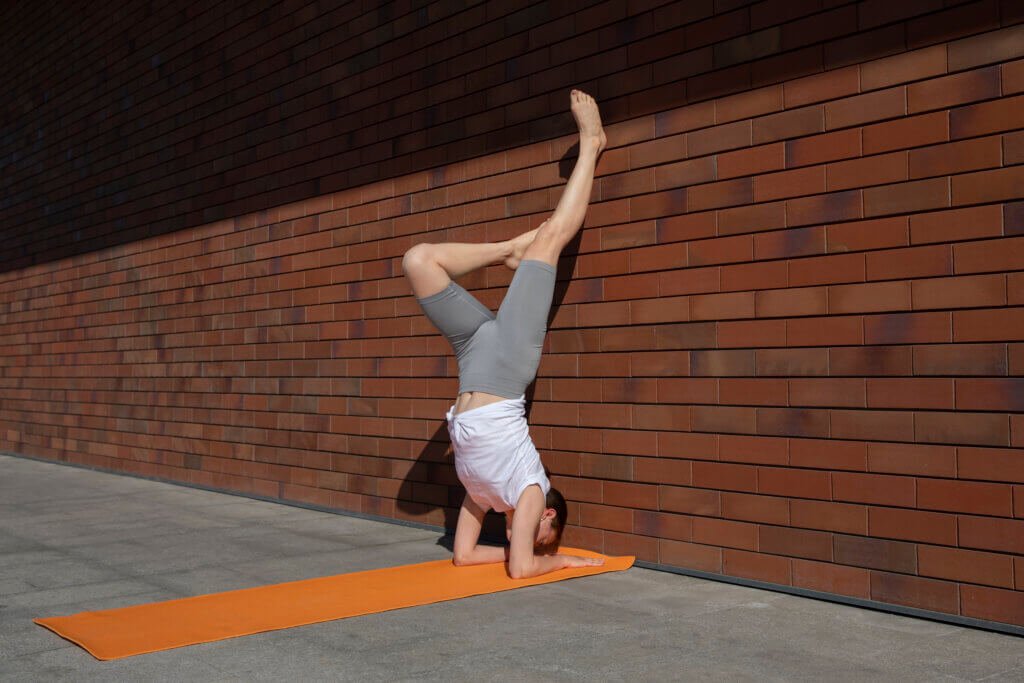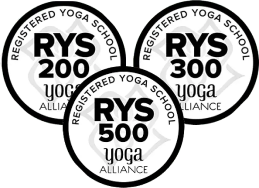
Yoga is a gentle exercise that increases flexibility and reduces tension. Yoga can be as therapeutic and calming or as intense and involved as you’d like. Viparita Karani, also known as the Legs-Up-the-Wall pose, inverts the body without putting excessive pressure on the head or neck. There are no restrictions, therefore anyone can perform this yoga pose. It is appropriate for both beginners and seniors. This yoga pose is also great for reducing anxiety and stress. In this article, we are going to discuss the benefits of the wall yoga exercise.
Table of Contents
ToggleWhat is Wall Yoga Exercise?
A phrase from Sanskrit that describes an act of inverting is known as Viparita Karani. Viparita is the Sanskrit word for “inverted” or “reversed,” while karani is the word for “doing” or “making.”
In yoga, the term Viparita Karani most frequently refers to an asana called legs-up-the-wall pose. This is what the Wall Yoga Exercise is. In this yoga, the practitioner of this asana lies on their back with their legs stretched out against a wall.
The asana known as Viparita Karani is very relaxing and comforting; it calms and energises the body and mind. This viparita karani or the wall yoga pose is easier to learn and keep for longer periods, allowing the practitioner to get the most out of its benefits.
How To Do Wall Yoga?
One of the best yoga poses for sleep is the Viparita Karani or the Wall Yoga Pose. This yoga pose is very relaxing and comforting. In this type of yoga, we use a wall as a prop to practice yoga. But it can also be performed without a prop. Nonetheless, to get the full advantages of Viparita Karani, do this yoga before bed.

To do this Wall Yoga Pose, you have to follow just a few simple steps, which are as follows:
- You have to first start by lying down on a flat surface. Make sure your tailbone is pointing towards the bottom of the wall.
- After bringing your hips as near to the wall as you can, begin to walk your feet up the wall until your body forms an L.
- Place a towel at the base of your back or a pillow under your head, depending on what position you feel the most comfortable in.
Precautions To Be Taken While Practicing The Wall Yoga
To get the most advantages from Wall yoga or the Viparita Karani asana, it is advisable to keep in mind a few cautions.
- Because the Viparita Karani yoga pose requires a little inversion, it is not recommended to do it for sleep during menstruation.
- If you are pregnant, try not to perform this wall yoga pose.
- This pose should not be performed by people with high blood pressure or eye conditions like glaucoma.
- If doing this wall yoga pose, you consistently get a sensation in your feet, try bending your knees and placing your hands on your soles to move your heels as close to your pelvis as possible.
- To receive the full advantages of Viparita Karani, practitioners with back and/or neck issues should avoid doing the asana or practicing under the supervision of a trained teacher.
Benefits Of Wall Yoga Exercise
Reduce Stress And Anxiety
A simple, peaceful inversion yoga pose is called viparita karani. It doesn’t exert too much pressure on your head or neck and supports your nervous system. The goal of the Legs-Up-the-Wall yoga pose is to release tension from your body and relax your body.
Enhanced Blood Flow
Foot edema is a prevalent problem that frequently arises from standing or sitting for long periods because your blood circulation is compromised. Your legs may swell due to this reason. In addition to reducing discomfort, this position helps prevent blood from collecting in your legs. By holding the pose, you lower your chance of blood clots. This position can greatly reduce swelling within a few minutes.
Reduces Cramping In The Muscles
This is one of the best methods for relieving stress and reducing swelling in the legs and feet. In addition, Legs Up the Wall can help relax the pelvic floor and help ease the discomfort associated with menstrual cramps, including headaches, backaches, and stomachaches. This posture is a good exercise for a hypertonic pelvic floor since it naturally causes the pelvic muscles to release and relax.
Enhances Sleep Quality
Legs Up the Wall is a very relaxing pose. When you perform this yoga pose with your legs up and body relaxing and you breathe deliberately, your body slows down. This results in a reduced heart rate, which triggers a relaxation response and helps reduce tension, anxiety, and sleeplessness. If you have trouble falling asleep, this is the perfect pose to do before going to bed.
Helps Calm the Mind
In the Legs Up the Wall pose, you can create a meditative state by completely relaxing your body and concentrating on deep breathing. You will experience relaxation and peace when you breathe, give up, and let go.
Frequently Asked Questions (FAQs)
Who can do wall yoga exercises?
In general, wall yoga is suitable for all but in some cases, you may take precautions. Legs Up the Wall Pose is one of the inverted positions that can be risky to perform when you are menstruating. Additionally, consult your doctor before attempting inverted positions if you have any medical concerns like high blood pressure that might increase symptoms.
What are the benefits of the Wall Yoga Exercise?
One of the most calming and relaxing yoga positions is Legs Up the Wall. It can reduce tension, slow down your nervous system, and give your body a relaxed feeling.
What is the other name of Wall Yoga?
Wall yoga is also known as the legs-up-the-wall pose or the Viparita karani.
What is the meaning of Viparita Karani?
A phrase from Sanskrit that describes an act of inverting is known as Viparita Karani. Viparita is the Sanskrit word for “inverted” or “reversed,” while karani is the word for “doing” or “making.”
What are the side-effects of the Wall Yoga?
Even though there are many benefits of the wall yoga exercise, not everyone can profit from it. The Wall Yoga Exercise may have some side effects such as reduced blood flow, “pins and needles” or a tingling feeling in the legs and feet. Additionally, some individuals suffer facial strain and redness.
We Also Provide These Courses:








